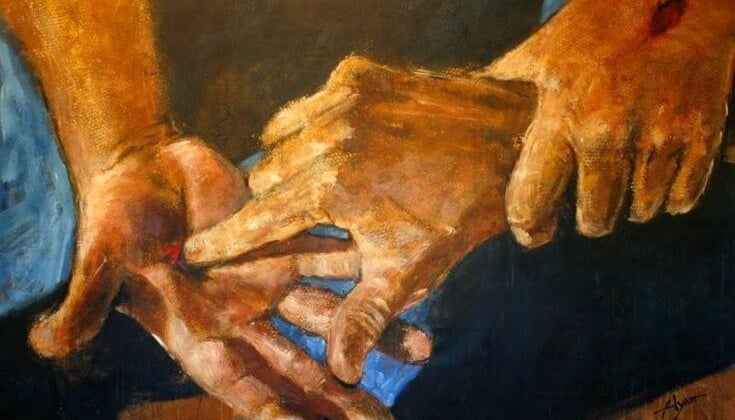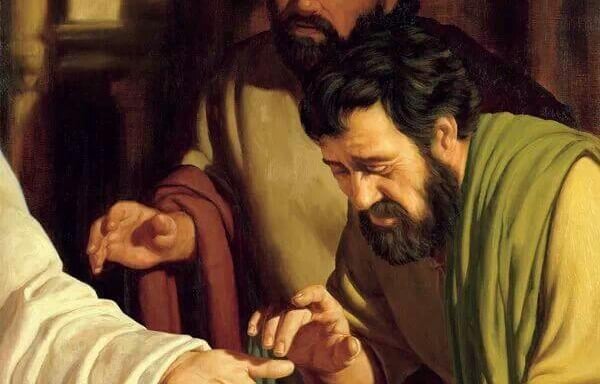Doubting Thomas: Wisdom on Faith from John 20:29
Doubting Thomas: Wisdom on Faith from John 20:29. Explore the dialogue between Jesus and Thomas, and discover the essence of true faith.


Introduction: Reflecting on the Nature of Doubt
The figure of Thomas, often referred to as "Doubting Thomas," is a familiar presence in the narrative of the resurrection. His story resonates with many, as it speaks to the human inclination to seek tangible evidence. However, it also offers profound insights into the nature of faith, particularly as illuminated by John 20:29.
Thomas's Inquiry: A Desire for Tangible Proof
When the disciples shared their encounter with the risen Jesus, Thomas expressed a desire for physical confirmation. He declared, "Except I shall see in his hands the print of the nails, and put my finger into the print of the nails, and thrust my hand into his side, I will not believe." (John 20:25) Thomas's inquiry stemmed not from malice, but from a sincere longing for conviction.
Jesus's Revelation: "Blessed are they that have not seen"
A week later, Jesus appeared to the disciples, including Thomas. He invited Thomas to examine his wounds, saying, "Reach hither thy finger, and behold my hands; and reach hither thy hand, and thrust it into my side: and be not faithless, but believing." (John 20:27) Following Thomas's declaration of faith, Jesus proclaimed, "Thomas, because thou hast seen me, thou hast believed: blessed are they that have not seen, and yet have believed." (John 20:29)
The Essence of Faith: Trust Beyond Sensory Perception
Jesus's response highlights the essence of faith: it transcends physical sight. True faith involves trusting in God's promises, even when they are not immediately apparent to our senses. It is a belief that extends beyond the realm of empirical evidence.


Source: Google Image
Acknowledging Human Doubt: A Part of the Journey
The narrative of Thomas acknowledges the reality of human doubt. It reminds us that questioning our faith is a natural part of the spiritual journey. God welcomes our inquiries, inviting us to seek a deeper understanding of his truth.
Applying Resurrection Faith Daily
While Thomas's story focuses on the initial doubt and eventual belief, the message of the resurrection is meant to be lived out every day. To explore how to apply the principles of resurrection faith to your daily life, consider reading "Living the Resurrection: A Daily Choice," which offers insights into embodying faith beyond the Easter season.
Living the Resurrection: A Daily Choice
The Journey of Faith: From Doubt to Belief
Thomas's experience illustrates that faith is a dynamic process, a journey from doubt to belief. It involves wrestling with our uncertainties and allowing God to transform our skepticism into conviction.
Choosing Faith: An Act of Trust
Ultimately, faith is a choice. We can choose to dwell in doubt, or we can choose to embrace belief. We can fixate on what is visible, or we can place our trust in the unseen. When we choose faith, even amidst uncertainty, we experience the transformative power of divine grace.
Conclusion: Embracing the Blessing of Belief
Let us learn from Thomas's journey and embrace the blessing of belief. May we cultivate a faith that transcends doubt and allows us to experience the fullness of God's love.
Frequently asked questions
Why is Thomas known as "Doubting Thomas"?
Because he refused to believe Jesus had risen until he saw and touched Jesus's wounds.
What was Thomas's specific demand to believe?
He said he wouldn't believe unless he saw the nail prints in Jesus's hands and put his finger in them, and thrust his hand into Jesus's side.
What is the significance of Jesus's statement in John 20:29, "blessed are they that have not seen, and yet have believed"?
It emphasizes that true faith involves believing without needing physical evidence, and those who do so are blessed.
What did Jesus say to Thomas when he appeared again?
Jesus invited Thomas to touch his wounds and told him to "be not faithless, but believing" (John 20:27).
What is the main lesson about faith that we can learn from Doubting Thomas?
That faith is a journey from doubt to belief, and that choosing to believe, even without visible proof, is a powerful act of trust.
Does the story of Thomas suggest that doubting one's faith is wrong?
No, it acknowledges that doubt is a human experience and that God welcomes our questions as part of our spiritual journey.
